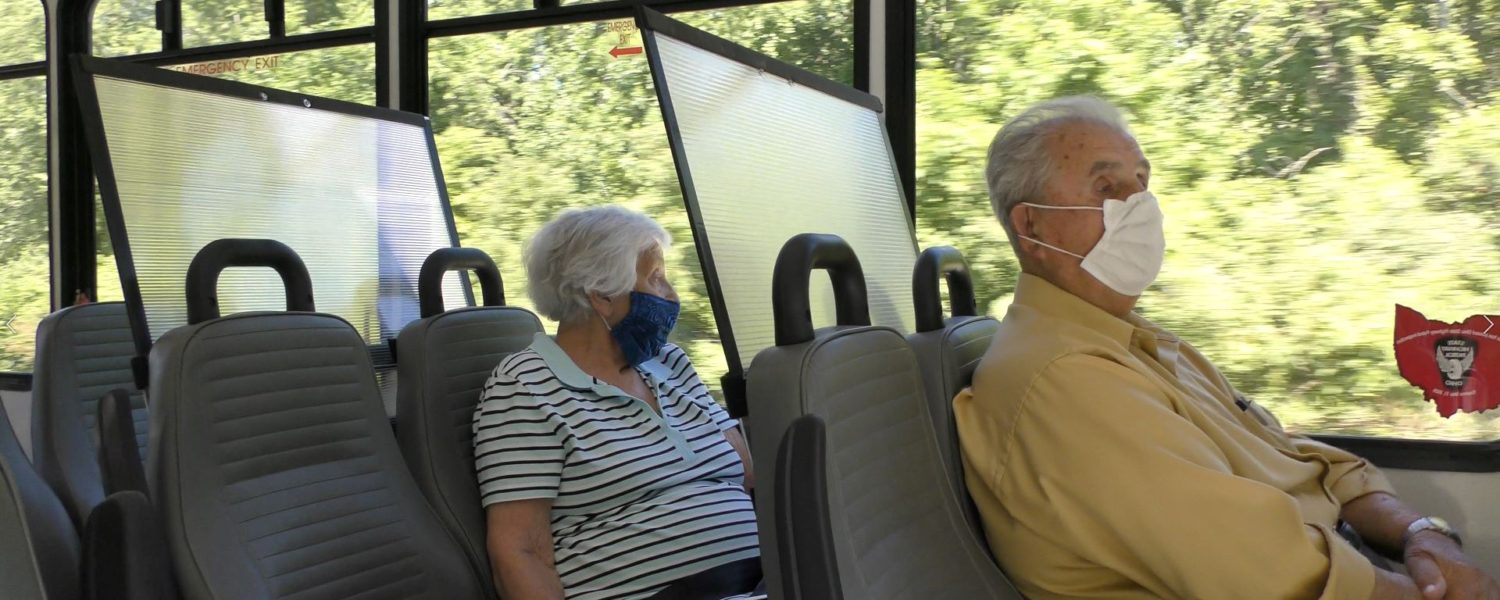By Kayla Graham
Social isolation and depression are just some of the feelings homebound or shut-in church members are experiencing due to the COVID-19 pandemic. With church services cancelled or moved to remote, it is easy for senior members to feel unstimulated or emotionally down.
With proper CDC safety precautions and state guidelines followed, using your church bus for short trips can be a stimulating and exciting event for members to look forward to, while improving their mental health.
The trip doesn’t need to have a destination; in fact, you probably won’t have your members leave the bus at all. A simple drive through a local park or neighborhood can be an enjoyable experience just by seeing new sights.
What Can You Do to Minimize Risk of COVID on Your Bus?
While the mental health of church members is extremely important, so is their physical safety. By taking precautions such as spacing out seating and enforcing mask requirements, you can decrease the risk of exposure.
Here are some steps your organization can take to minimize COVID transfer on your bus. As always, we encourage you to follow the CDC guidelines.
Consider investing in additional items that can be added to your bus to help safe travel! Talk to your trusted bus dealership for more information on obtaining these items.
Driver and Passenger Shields
There are many different types of driver and passenger shields available. Some companies offer a swing away shield made of polycarbonate that functions like a door for the driver. Many drivers have created their own using a pseudo-curtain rod and curtain. Some transit agencies have the driver wear a facemask and polycarbonate shield.
Passenger shields are not as common, but they are available. There are hanging shields made from 30 mil thick vinyl, similar to the material found on boat covers These hang from the ceiling to form a barrier between each seat row. One seating manufacturer has created a barrier that mounts to the grab handles on the top of seats. There is also a “pull up” shield that raises and lowers.
Bus Air Filtration Systems
There are only a couple bus air filters on the market currently, but more are soon to come.
One system mounts underneath a seat, resembling a bus seat heater. This filter uses HEPA filter and UV light to trap and kill particles in the bus air. Another system is an add-on component to the rear air conditioning system that also uses HEPA and UV light. In this system, the device is connected to the rear evaporator blower. Before the cooled air is blown into the bus, it goes through the filter to trap particles.
Weather permitting, have your windows open or cracked to let fresh air into the vehicle. Many bus windows have “T” sliders at the top that can be opened to circulate fresh air.
Some buses have a roof hatch in the middle of the ceiling that can be partially opened (similar to a sunroof).
Cleaning Procedures and Systems
Making sure your bus is thoroughly cleaned and disinfected after every use is crucial to keeping germs away. The EPA states that coronaviruses are enveloped viruses, meaning they are “one of the easiest types of viruses to kill with the appropriate disinfectant product.”
Be sure to disinfect steering wheels, handles, assist rails, controls, windows, floors and any frequently touched surface.
In these unprecedented times, taking care of church member’s mental health is so important. By structuring safe activities and following CDC guidelines and safety procedures, your bus can be a great tool to benefit the elderly members…simply by giving them a change of scenery!
Kayla Graham handles social media and marketing for Transportation Equipment Sales Corp (TESCO), www.tescobus.com. TESCO is a nationally recognized leader in bus sales and offers one of the largest in-stock bus inventories in the country. They provide both new and used buses and bus parts for all industries, including senior living, school, church, hotel, child care, and shuttle use.






